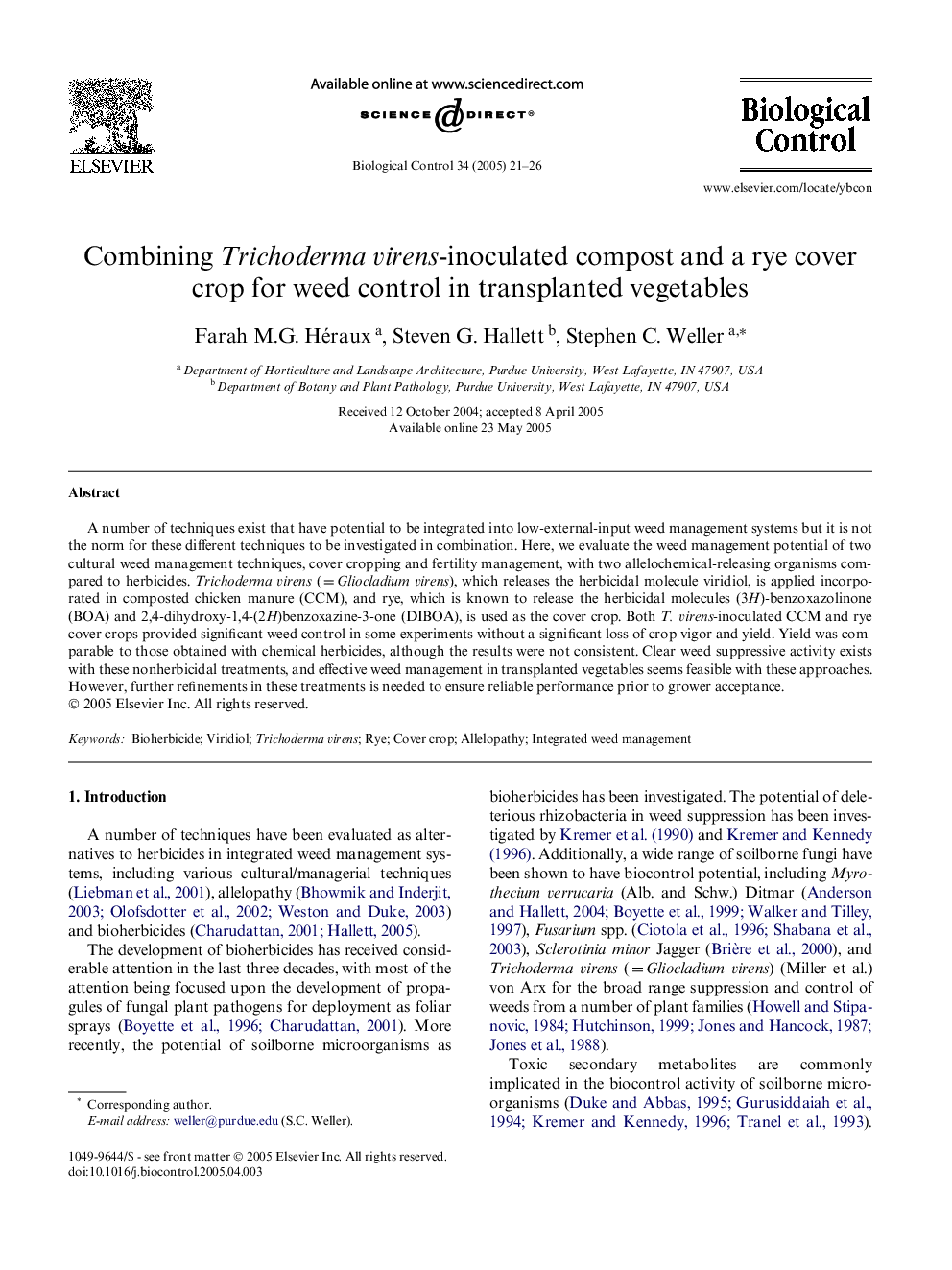| Article ID | Journal | Published Year | Pages | File Type |
|---|---|---|---|---|
| 9471925 | Biological Control | 2005 | 6 Pages |
Abstract
A number of techniques exist that have potential to be integrated into low-external-input weed management systems but it is not the norm for these different techniques to be investigated in combination. Here, we evaluate the weed management potential of two cultural weed management techniques, cover cropping and fertility management, with two allelochemical-releasing organisms compared to herbicides. Trichoderma virens (=Gliocladium virens), which releases the herbicidal molecule viridiol, is applied incorporated in composted chicken manure (CCM), and rye, which is known to release the herbicidal molecules (3H)-benzoxazolinone (BOA) and 2,4-dihydroxy-1,4-(2H)benzoxazine-3-one (DIBOA), is used as the cover crop. Both T. virens-inoculated CCM and rye cover crops provided significant weed control in some experiments without a significant loss of crop vigor and yield. Yield was comparable to those obtained with chemical herbicides, although the results were not consistent. Clear weed suppressive activity exists with these nonherbicidal treatments, and effective weed management in transplanted vegetables seems feasible with these approaches. However, further refinements in these treatments is needed to ensure reliable performance prior to grower acceptance.
Related Topics
Life Sciences
Agricultural and Biological Sciences
Agronomy and Crop Science
Authors
Farah M.G. Héraux, Steven G. Hallett, Stephen C. Weller,
